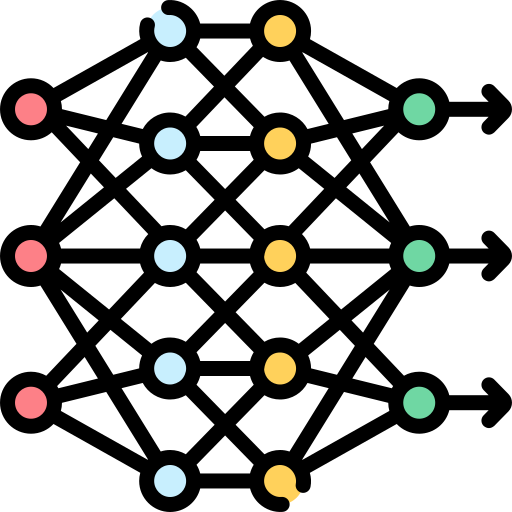
This logo isn't an ad or affiliate link. It's an organization that shares in our mission, and empowered the authors to share their insights in Byte form.
Rumie vets Bytes for compliance with our
Standards.
The organization is responsible for the completeness and reliability of the content.
Learn more
about how Rumie works with partners.
ChatGPT, an AI text generation tool, launched in November 2022. It had 100 million active users at the beginning of 2023, quickly becoming the fastest-growing app in history.
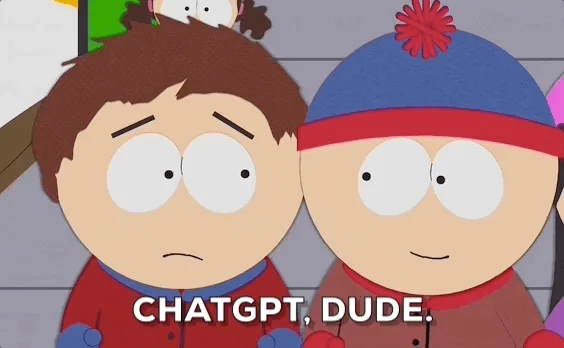
So what's all the buzz about?
Some people argue that apps like Chat GPT that use generative AI are the biggest innovation in technology since the smartphone or even the internet.
But what exactly is generative AI? And how do people use it?
What is Generative AI?
Artificial Intelligence or AI is about getting machines to do what humans can do by imitating the human brain.
Generative AI refers to a type of AI that creates new content in the form of text, images, audio, and code. It wasn't until the last 10 years that we've had the amount of data and computers powerful enough for generative AI to advance.

There are two technological breakthroughs that have allowed generative AI to create content that rivals, or according to some people, is even better than what humans can create.
2) Large Language Models

Large language models (L.L.M.s) are neural networks created by tech companies like Google, Microsoft, and Open AI that were trained using extensive amounts of data from places like the internet, academic research, and digital books.
L.L.M.s use a transformer architecture that pays attention to how different words and phrases work together. It also is able to evaluate different sets of data at the same time, making it faster and more efficient.
How Does Generative AI work?
Lots of data are collected and broken down into smaller units known as tokens.
A neural network is built and then trained with the "tokenized" data.
Users give the AI system a prompt. Example: "Write a poem about popsicles in the style of Jay-Z."
Using AI algorithms, new content is delivered based on the prompt.
Here's what it looks like in ChatGPT:
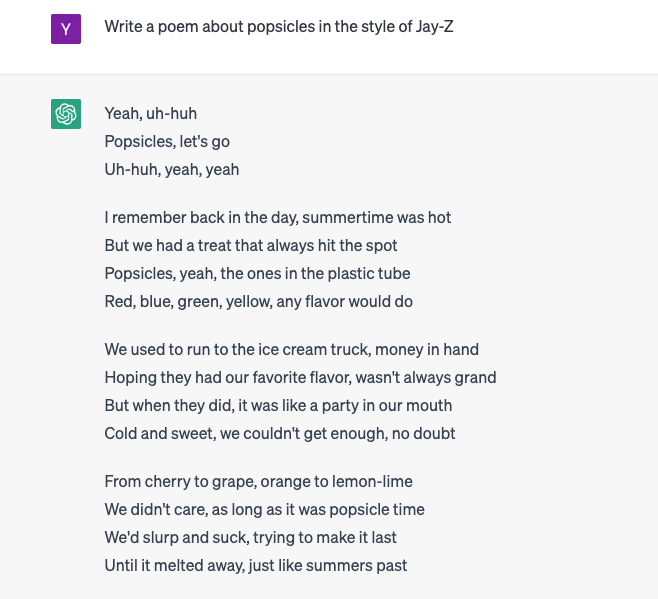
To hear an audio clip of the lyrics from the poem in Jay Z's voice (generated by Uberduck), click the play button on the audio player below:
What Does Generative AI Do Well?
Here are some of the ways generative AI can be used effectively:
Editing written content such as emails, essays, and resumes
Writing code
Explaining complicated concepts to a variety of audiences
Generating artwork in a particular style
Generating original voiceovers for digital content
Designing physical products and buildings
Summarizing books and long research papers
Creating music in a particular style
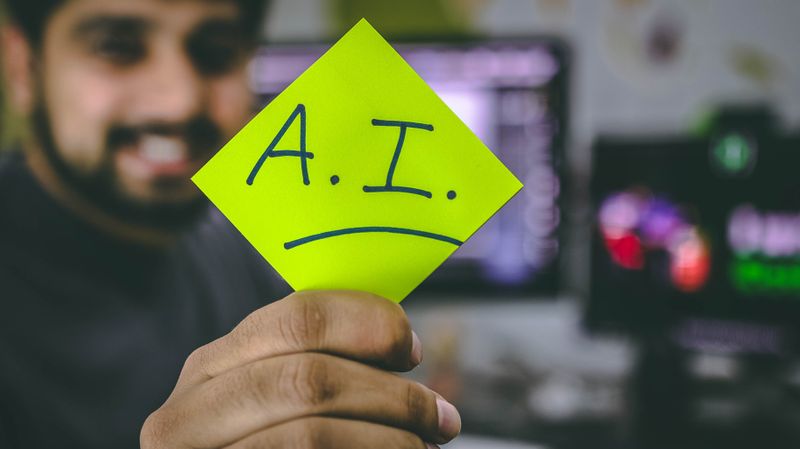 Photo by Hitesh Choudhary on Unsplash
Photo by Hitesh Choudhary on UnsplashQuiz
Which of the following would be an effective use of generative AI? Select all that apply.
All of these would be effective uses of generative AI systems.
Generative AI Tools
These are some applications using generative AI that you can try out depending on what you want it to do:
Text generation tools: ChatGPT, Jasper, AI-Writer, and Lex
Image generation tools: Dall-E 2, Midjourney, and Stable Diffusion
Music generation tools: Amper, Dadabots, and MuseNet
Code generation tools: CodeStarter, Codex, GitHub Copilot and Tabnine
Voice synthesis: Descript, Listnr, and Podcast.ai
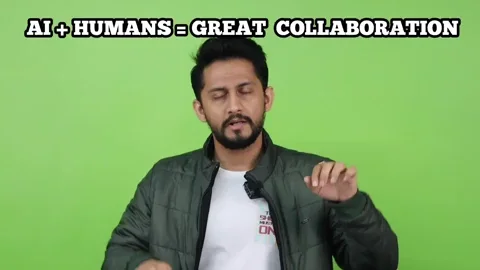
Take Action
Generative AI is an exciting new innovation, so why not give it a try or learn more about it!
 Photo by Tyler Lastovich on Unsplash
Photo by Tyler Lastovich on UnsplashThis Byte has been authored by
Yvonne Caples
Learning Experience Designer | CS Educator
